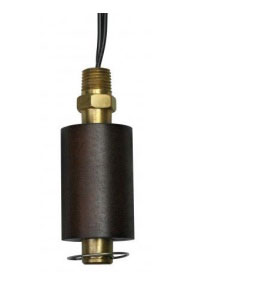M4300-200-90 Series

M4300-200-90 Series
Oil/water interface float switch is designed to detect waters underneath fuels or oils, or for oil/water separator tank applications.
Can also replace standard floats on other continuous sensors or multi-level float switches to monitor or control separated fluids or the oil/water interface.
Applicable Industries
- Oil/water level detection
- Corrosive environments
Features
- Provides years of dependable water interface detection in most environments
- Designed to sink through oils to switch at the oil/water level below
Material
Specifications
- Max. temperature: 221°F / 105°C
- Max. pressure: 150 psi standard locations
- Switch rating: 60 watt, 240V max. (AC/DC), SPST
Electrical Considerations
When using Madison level switches, it is important to consider the application’s electrical parameters. Our level switches utilize reed switch technology, which are glass encapsulated, magnetically actuated switches. Madison generally provides electrical ratings for resistive loads; however, where the maximum current of the load permits, the switches are capable of controlling devices such as motors, solenoids or coils that produce capacitive or inductive electrical loads. Where possible, Madison recommends the use of general-purpose/isolation relays or controllers to protect the switch.
Protection Techniques and Common Failure Modes
Reed Switch protection is the most successful method of increasing the performance and life of your level sensor. Since every application varies, it is important to understand your protection options. The life of the reed switch is typically 1 million cycles, within rated load conditions. The table below is a guide to suggested protection techniques and common failure modes associated with each load type.